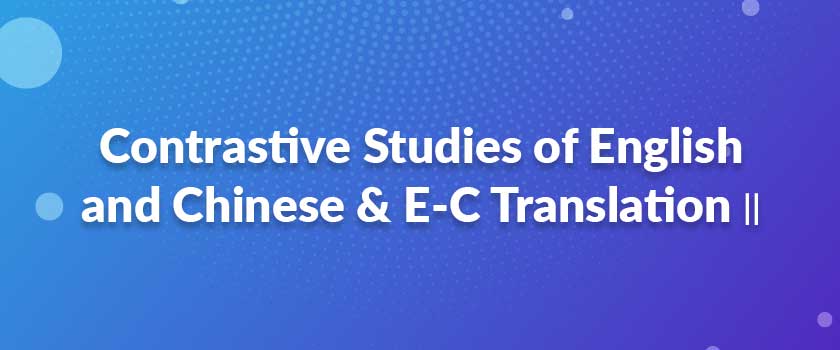Extension to the right or left
In fact, every level of English language including phrases, sentences, complex sentences, presents the form of extension to the right, in other words, put the modifiers in front of noun, for instance, parties concerned, sum total. At the same time, Chinese presents the form of extension to the left. When translation, if possible, we should advance the postpositive attributive, according the Chinese sentence pattern.
Subject-prominent and Topic-prominent
The subject in English has following features and functions:
1. All the statements and questions should be equipment with a subject;
2. The subjects should be placed at the beginning of the sentences, they are the objects that predicate describe.
3. It is the subject determines the number of verb, as well as other formal changes of predicate verbs.
4. All the subjects should be nominal, this is a huge difference from Chinese.
Above all, we can easily understand that English is a subject-prominent language.
By contrast, Chinese is a topic-prominent language. Topic sentence is composed of topic and comment. This sentence structure occupies a high proportion which is about fifty percents in Chinese.
And when both of them using subject-prominent construction, English tend to choose impersonal subject, and Chinese tend to choose personal one. When it comes to the translation, we should replace the impersonal subject in English with personal one.
Read Also: Differences between English and Chinese from Four Aspects
Form ideographic and word ideographic
The complicated concepts can be expressed through changes of word form in English, such as affixes, tense, voice, number, comparatives and superlatives. Compared to English, the morphological characteristics of Chinese words appeared much poor, resulted the only way to express tense or voice is words. The word means in Chinese can be divided into two types: tense verbs, like着,了,过; time adverbs, like 又,已经,一直.
When handling English – Chinese translation, one should be good at finding the features of Form ideographic, and put the significant words lexicalization.
Synthetic expression and analytic expression
To the same concept with complicated semantic, if can be expressed in one word, it’s synthetic expression; if need a phrase to express, it’s analytic expression. Both of the expressions exist in either English or Chinese language. But English lean to the synthetic expression, and Chinese lean to the analytic expression.
Rich in affixes is the most striking feature of synthetic language, it can express the meaning which should be presented by two or more compositions in analytic language through the addition and changes of affixes. For example: Most people enslaved themselves to acquire what turned out to be only a burden.
Chinese tend to be isolating language, usually it needs a phrase to express the meaning of English affix. For example,
English: He watered the plants.
Chinese: 他给植物浇水.
Replacement and repeat
There is an unwritten rule in English which doesn’t exist in Chinese that is avoiding repeat, except for emphasize and rhetoric. It majorly has three ways to avoid repeat: 1. Pronouns; 2. Ellipsis; 3. Conversion. Thus when translate English to Chinese, we should change the pronouns to nouns or reappear the ellipsis.
reference:《英汉语言比较与翻译》,杨丰宁 编著
Take a look at how we helped our client by localizing their project for Chinese language. Click here to read the complete case study





